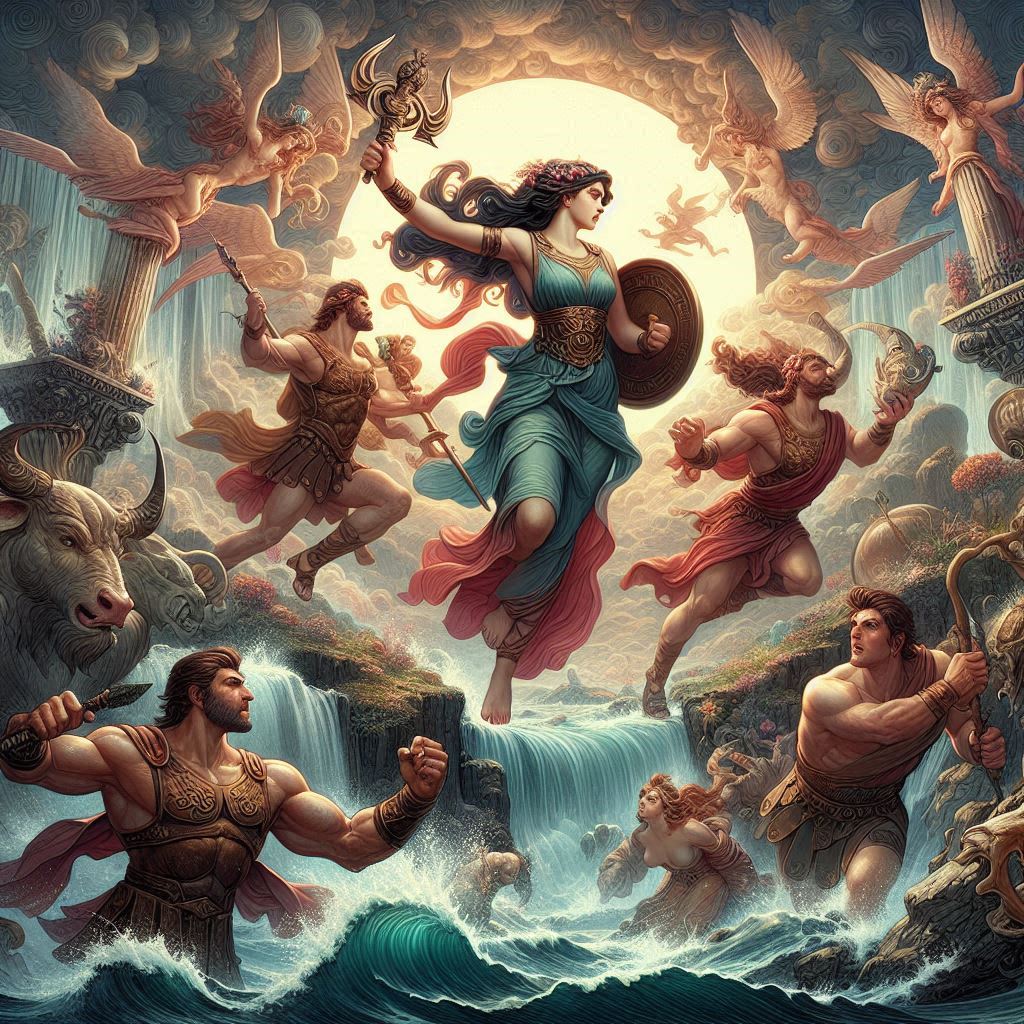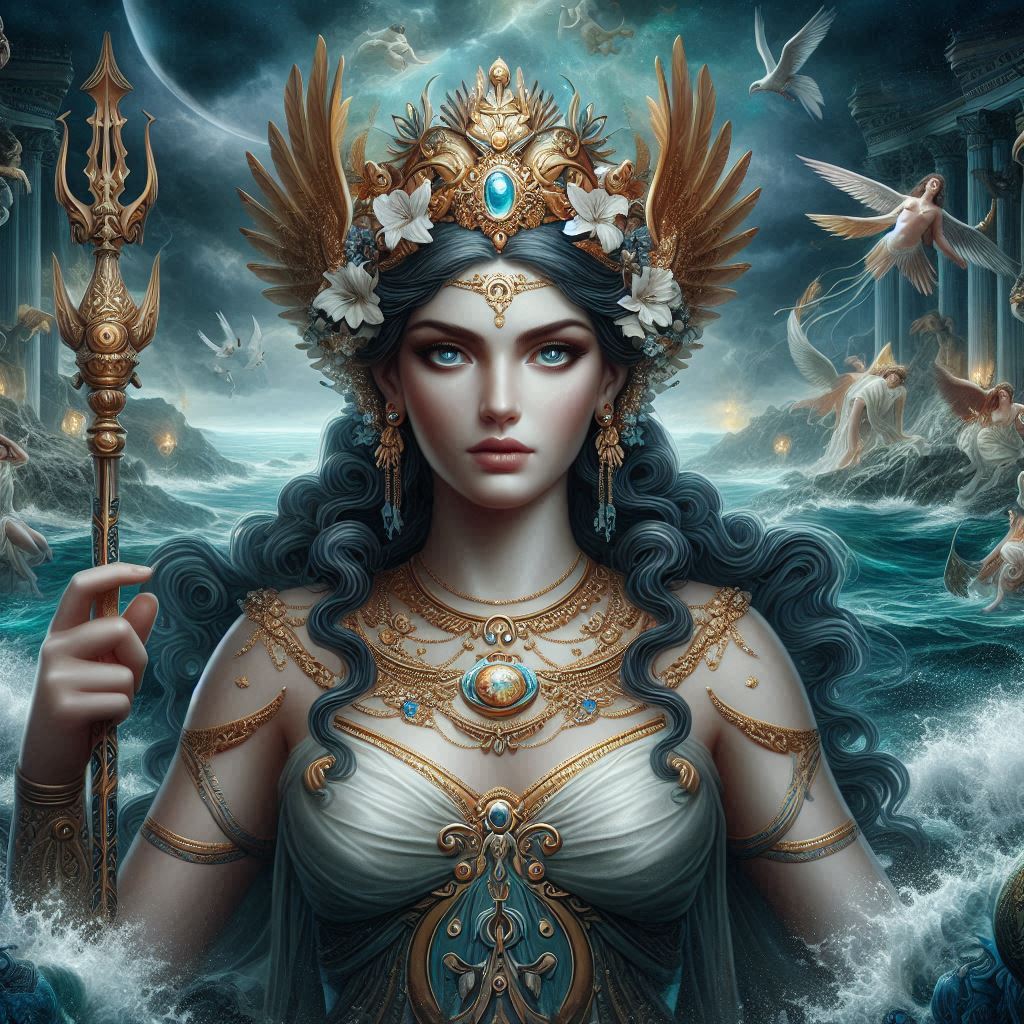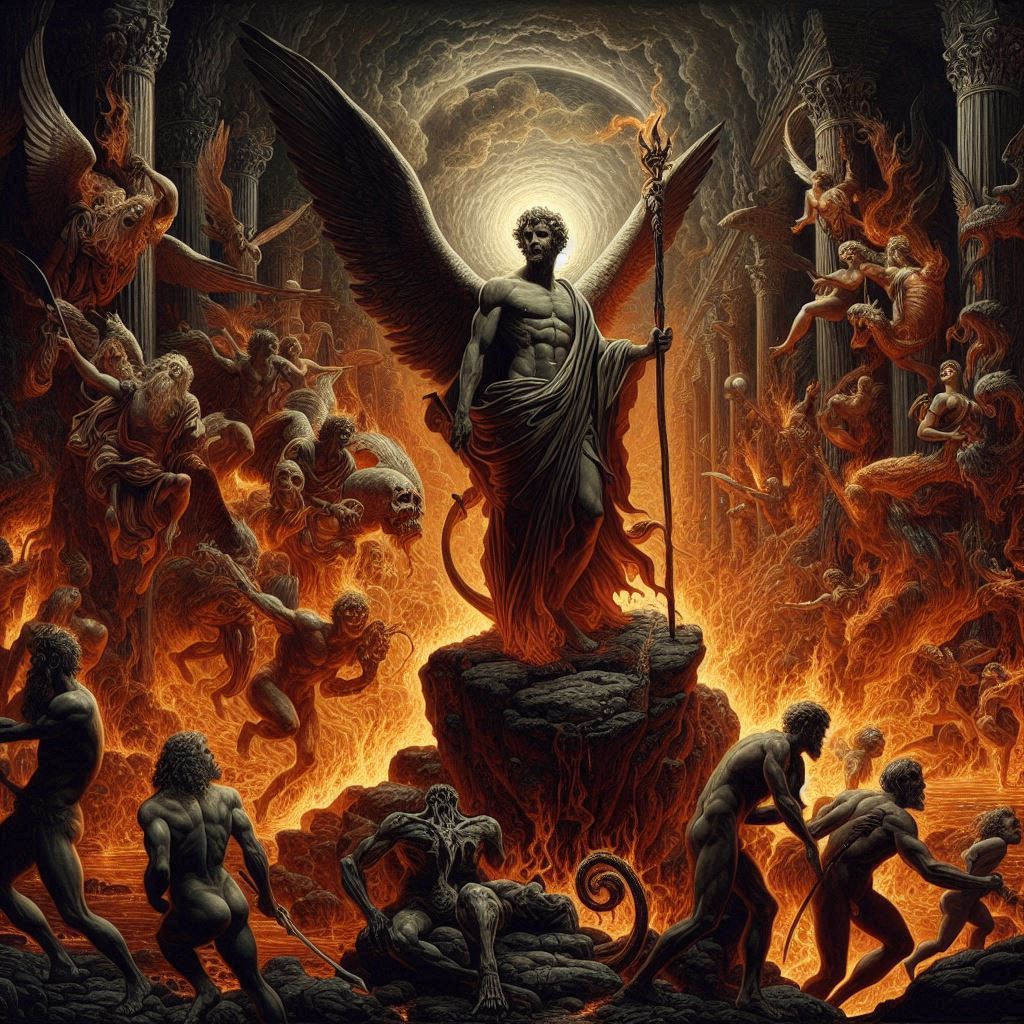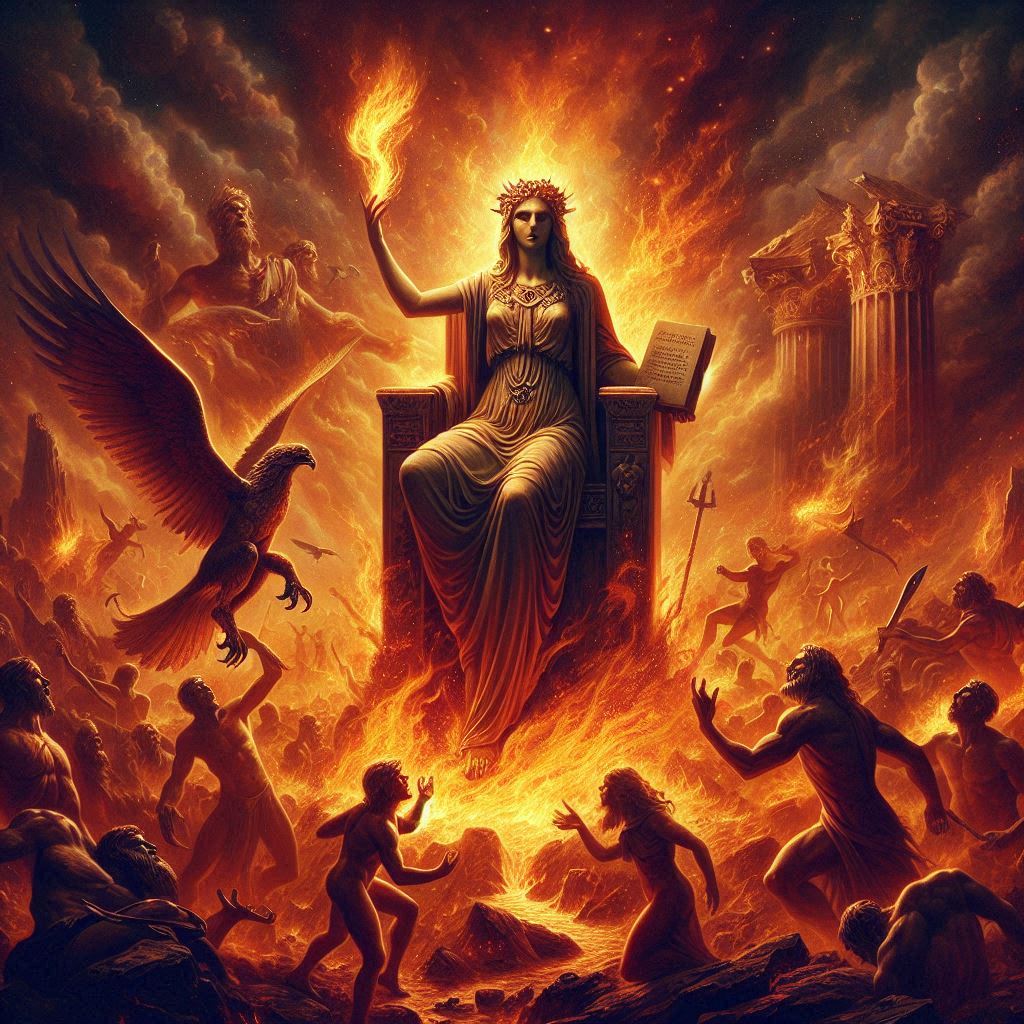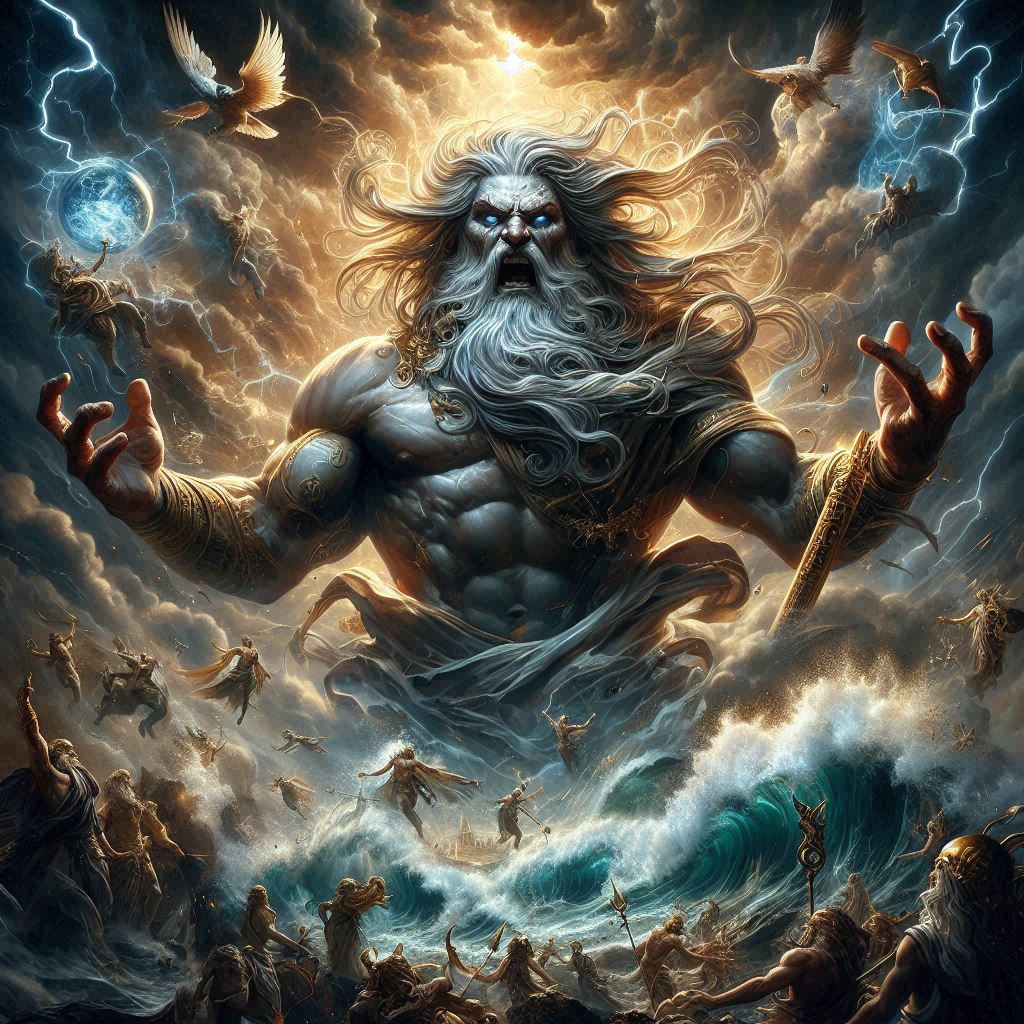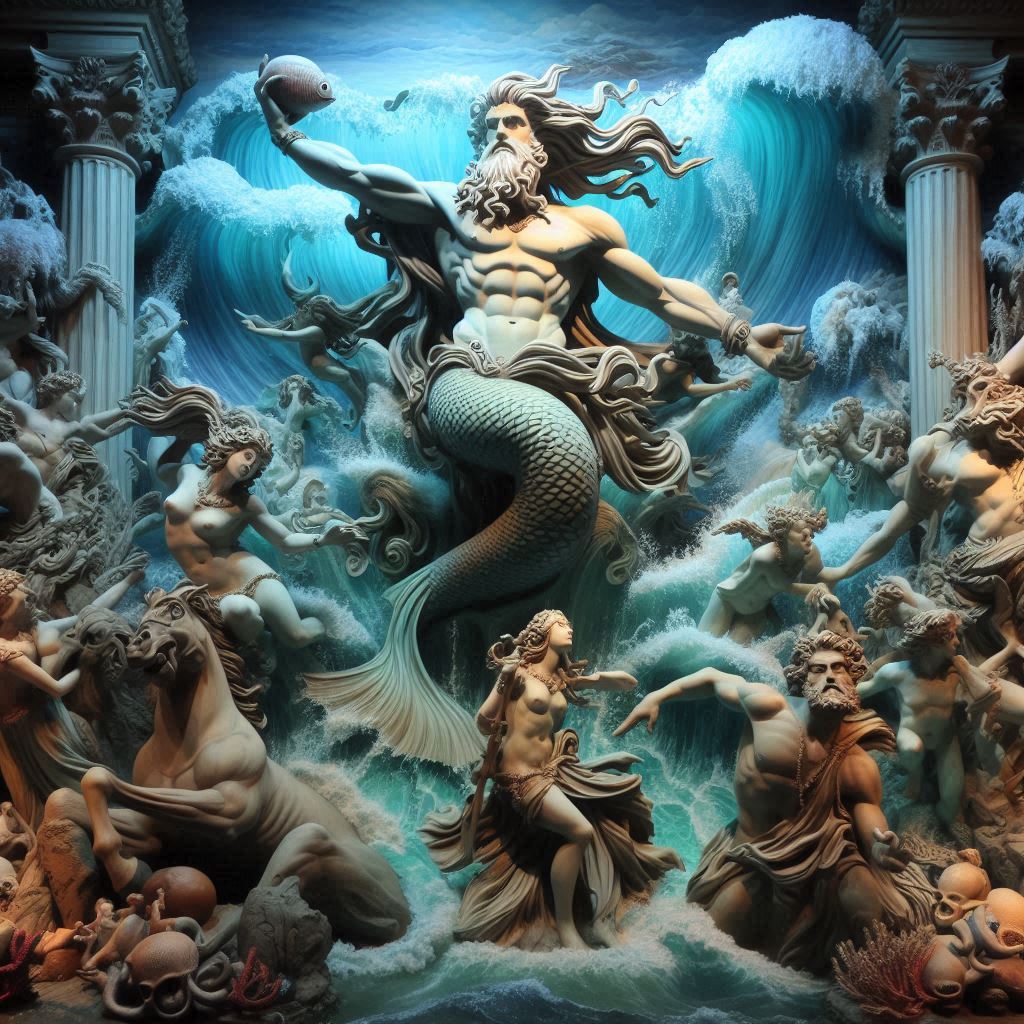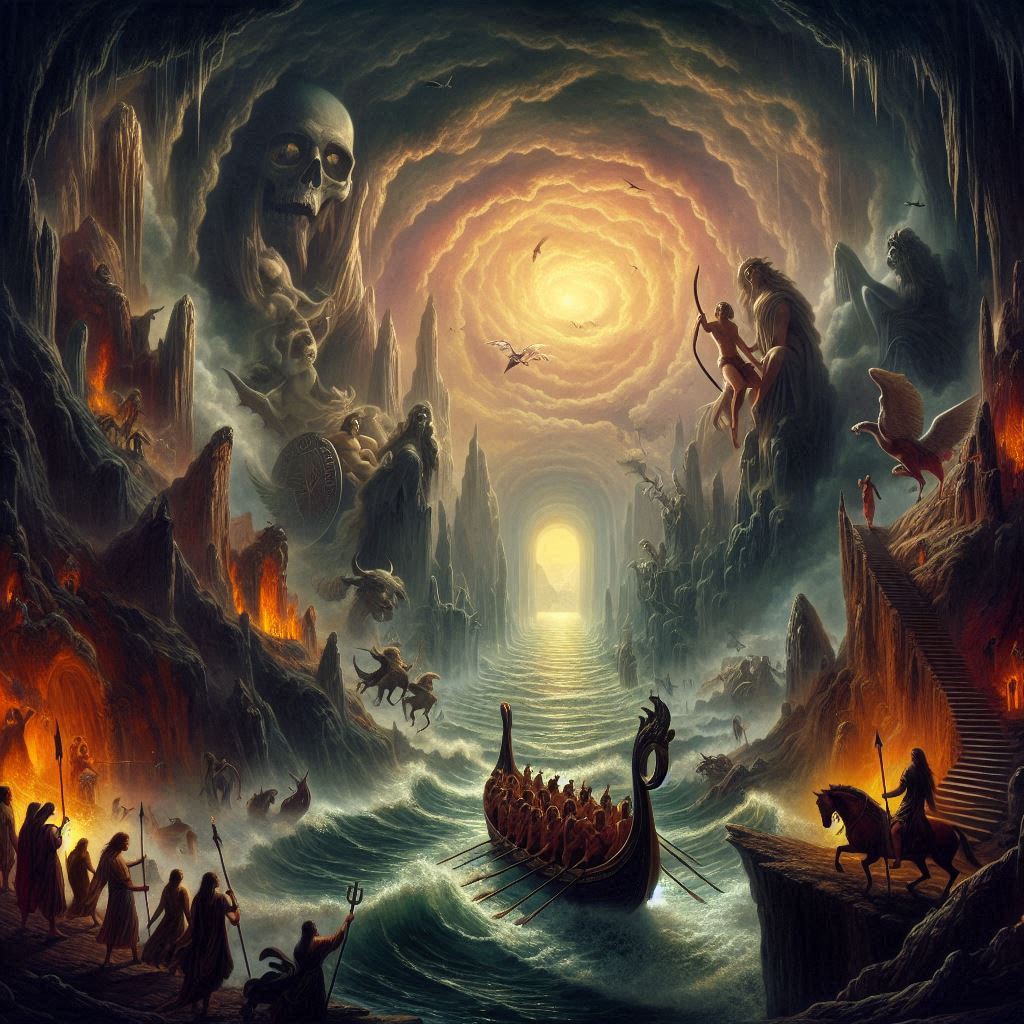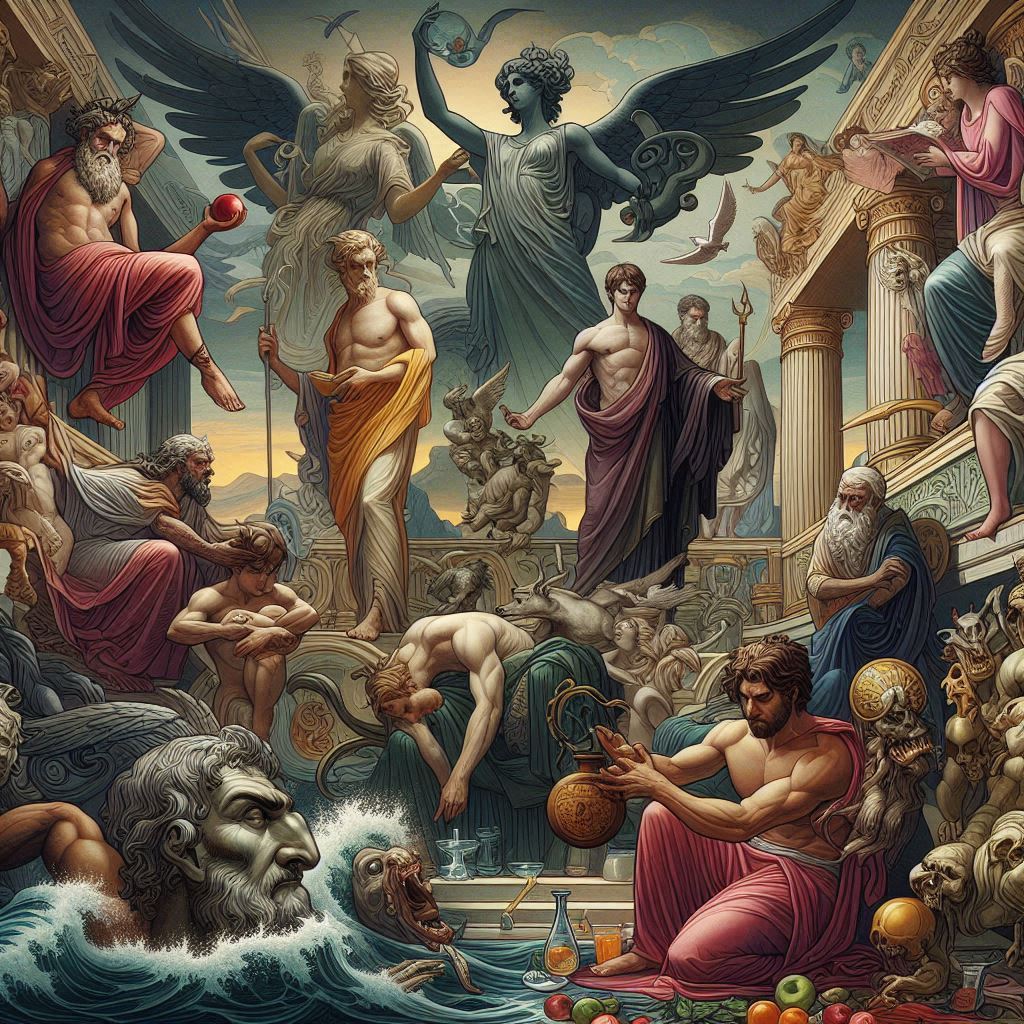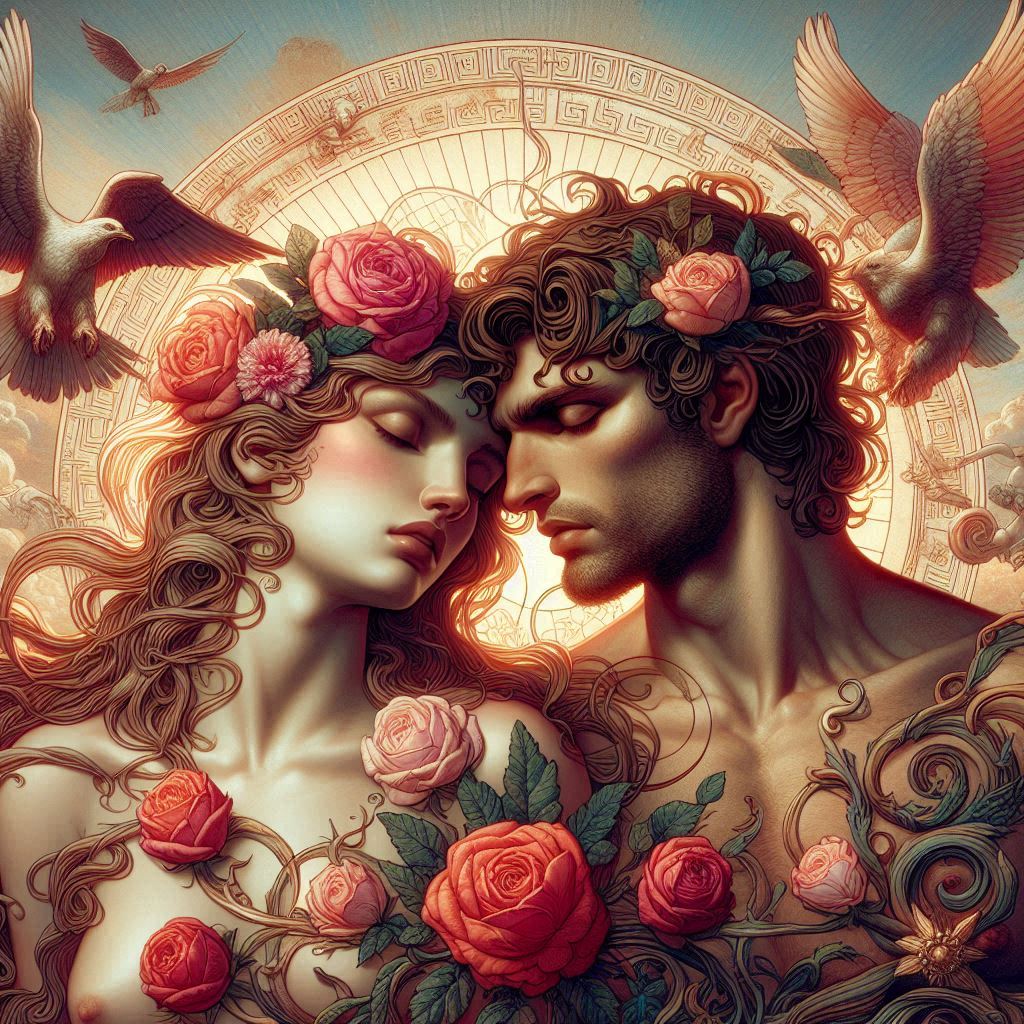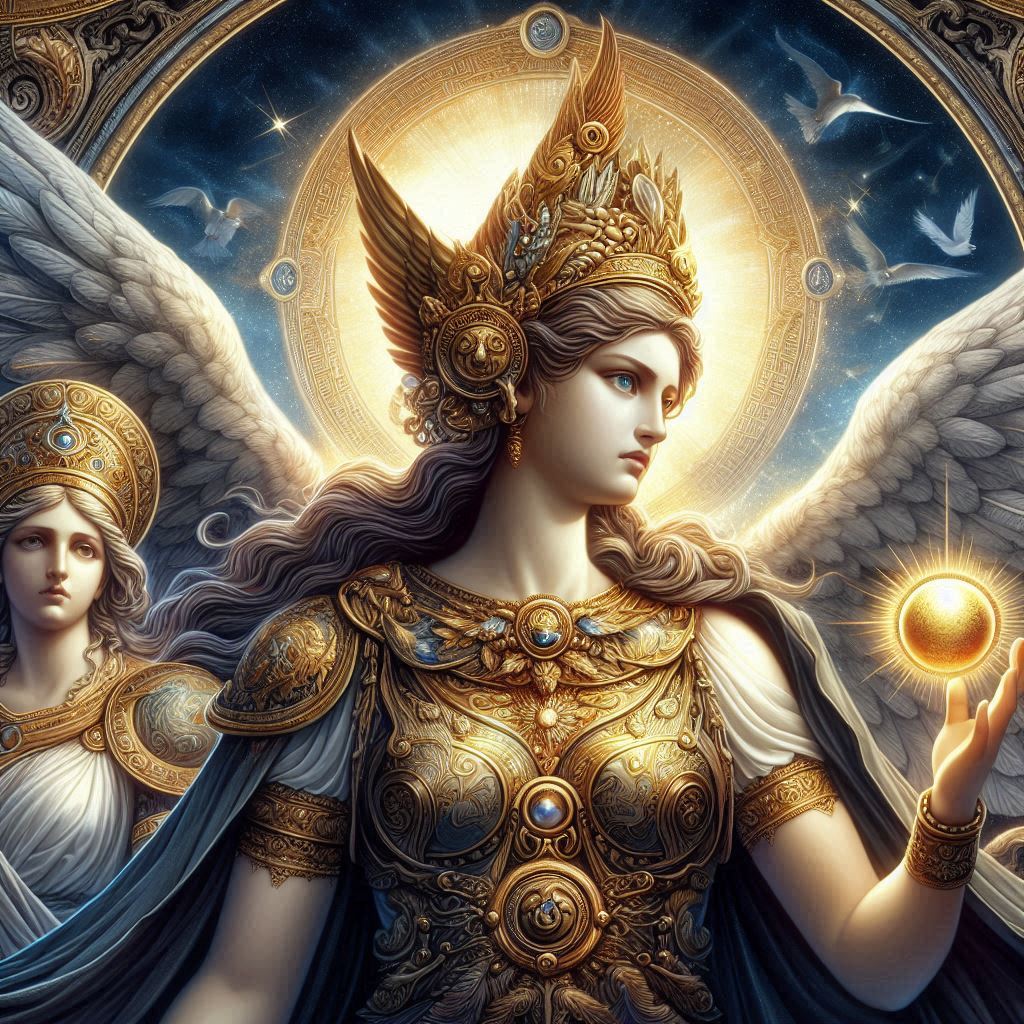The Trials of Heracles, also known as Hercules in Roman mythology, stand as one of the most iconic and enduring narratives in Greek mythology, showcasing the hero’s journey of courage, strength, and redemption. Heracles, son of Zeus and Alcmene, is fated for greatness from birth, destined to undertake twelve labors as punishment for his unwittingly killing his own family in a fit of madness induced by Hera, the queen of the gods. These labors, a series of seemingly impossible tasks, serve as both trials of Heracles’s character and opportunities for redemption and divine favor. Through his perseverance, valor, and ingenuity, Heracles overcomes each challenge, earning glory, honor, and immortality in the annals of myth and legend.
The first labor of Heracles is to slay the Nemean Lion, a ferocious beast with impenetrable skin and razor-sharp claws. Armed only with his strength and cunning, Heracles confronts the lion in its lair and strangles it to death, using its own pelt as a trophy and armor. The slaying of the Nemean Lion symbolizes Heracles’s physical prowess and courage in the face of danger, establishing him as a formidable hero and protector of humanity.
The second labor tasks Heracles with defeating the Hydra of Lerna, a monstrous serpent with multiple heads and venomous breath. Each time Heracles severs one of the Hydra’s heads, two more grow in its place, making it a seemingly insurmountable challenge. With the aid of his nephew Iolaus, Heracles devises a strategy to cauterize the Hydra’s neck stumps, preventing new heads from regenerating and ultimately defeating the creature. The slaying of the Hydra demonstrates Heracles’s resourcefulness, teamwork, and ability to overcome adversity through strategic thinking and perseverance.
The third labor sends Heracles on a quest to capture the Golden Hind of Artemis, a sacred deer with golden antlers that roams the forests of Ceryneia. Despite its elusive nature and supernatural speed, Heracles succeeds in capturing the hind alive, demonstrating his skill as a hunter and his determination to fulfill his divine tasks. However, the capture of the hind incurs the wrath of Artemis, goddess of the hunt, leading to further trials and tribulations for Heracles in his quest for redemption.
The fourth labor of Heracles is to capture the Erymanthian Boar, a fearsome creature that terrorizes the region of Arcadia. Heracles tracks down the boar to its lair on Mount Erymanthos, where he subdues it with brute strength and skillful tactics, capturing it alive and returning it to King Eurystheus as proof of his success. The capture of the Erymanthian Boar demonstrates Heracles’s physical prowess and mastery of the hunt, further solidifying his reputation as a hero of unparalleled strength and courage.
The fifth labor tasks Heracles with cleaning the Augean Stables, the filthy and neglected cattle pens of King Augeas of Elis. The stables, home to thousands of cattle and years of accumulated waste, pose a daunting challenge for Heracles, but he devises a clever solution to divert the rivers Alpheus and Peneus to cleanse the stables in a single day. The cleaning of the Augean Stables showcases Heracles’s ingenuity, determination, and willingness to tackle seemingly impossible tasks with creative thinking and determination.
The sixth labor of Heracles is to slay the Stymphalian Birds, man-eating creatures with sharp metallic feathers that terrorize the marshes of Stymphalos. With the aid of Athena and Hephaestus, who provide him with bronze castanets to frighten the birds, Heracles drives the flock into flight and shoots them down with his bow and arrows, eliminating the threat to the local populace. The slaying of the Stymphalian Birds demonstrates Heracles’s skill as an archer and his ability to confront and overcome supernatural adversaries with divine assistance.
The seventh labor sends Heracles on a quest to capture the Cretan Bull, a monstrous creature sent by Poseidon to terrorize the island of Crete. Heracles subdues the bull with his bare hands and brings it back to King Eurystheus, who releases it into the streets of Marathon, where it continues to wreak havoc until Theseus, the legendary hero-king of Athens, eventually captures and sacrifices it to the gods. The capture of the Cretan Bull demonstrates Heracles’s bravery and determination in confronting dangerous beasts and protecting innocent lives.
The eighth labor of Heracles is to obtain the Mares of Diomedes, four man-eating horses that feed on human flesh and are kept by the cruel king Diomedes of Thrace. Heracles defeats Diomedes in battle and feeds him to his own horses, taming them in the process and leading them back to King Eurystheus as proof of his success. The capture of the Mares of Diomedes showcases Heracles’s cunning, resourcefulness, and willingness to resort to unconventional methods to achieve his goals.
The ninth labor tasks Heracles with obtaining the girdle of Hippolyta, queen of the Amazons, a tribe of warrior women renowned for their skill in battle and mastery of the bow. Heracles embarks on a diplomatic mission to the Amazonian queen, intending to negotiate the peaceful acquisition of her girdle. However, Hera, seeking to thwart Heracles’s progress, sows discord among the Amazons, leading to a violent confrontation in which Heracles kills Hippolyta and claims her girdle as his own. The capture of the girdle of Hippolyta demonstrates Heracles’s diplomacy, charisma, and the complexities of his relationship with the gods and mortals alike.
The tenth labor of Heracles is to obtain the cattle of the monster Geryon, a triple-bodied giant who dwells on the island of Erytheia. Heracles travels to the western edge of the world, where he battles and defeats Geryon, seizing his cattle and driving them back to Greece. Along the way, Heracles faces numerous obstacles and adversaries, including the giant Atlas, whom he enlists to retrieve the golden apples of the Hesperides as a reward for his assistance. The capture of the cattle of Geryon demonstrates Heracles’s resilience, determination, and willingness to undertake perilous quests in pursuit of his divine tasks.
The eleventh labor of Heracles is to obtain the golden apples of the Hesperides, the daughters of Atlas, which are guarded by a dragon in a distant garden at the edge of the world. Heracles enlists the aid of Atlas, who retrieves the apples for him while Heracles supports the weight of the heavens on his shoulders, a punishment inflicted by Zeus for his role in the Titanomachy. Upon Atlas’s return, Heracles tricks him into resuming his burden, allowing him to escape with the apples and complete his task. The retrieval of the golden apples of the Hesperides demonstrates Heracles’s cunning, resourcefulness, and the interplay between divine punishment and divine favor in his mythological journey.
The twelfth and final labor of Heracles is to capture Cerberus, the fearsome three-headed hound of Hades, who guards the entrance to the underworld. Heracles descends into the realm of the dead, where he overpowers Cerberus with his bare hands and carries him back to the surface, presenting him to King Eurystheus as proof of his accomplishment. Cerberus, symbolizing death and the boundary between the living and the dead, represents Heracles’s ultimate triumph over mortality and his acceptance of his destiny as a hero of legendary stature.
The trials of Heracles encompass a series of mythological challenges that test his strength, courage, intelligence, and character, shaping him into the archetypal hero of Greek mythology. Each labor represents a symbolic journey of transformation, redemption, and divine favor, as Heracles confronts and overcomes seemingly insurmountable obstacles with determination, ingenuity, and divine assistance.
Heracles’s hero’s journey is not only a testament to his physical prowess and martial skill but also to his moral growth, resilience, and capacity for redemption. His labors serve as allegorical narratives that explore universal themes of struggle, sacrifice, temptation, and the pursuit of excellence and honor. Through his trials, Heracles learns valuable lessons about the nature of power, responsibility, and the complexities of the divine-human relationship.
Moreover, Heracles’s interactions with gods, monsters, and mortals throughout his journey reveal the intricate web of relationships and rivalries in the mythological world. He faces challenges orchestrated by Hera, who seeks to hinder and punish him for his divine parentage and connection to Zeus. Yet, Heracles also receives aid and guidance from other deities, such as Athena, Hermes, and Hephaestus, who admire his courage and champion his cause.
The Twelve Labors of Heracles are not just a series of fantastical feats but also a narrative framework for exploring the hero’s inner journey and his quest for self-discovery and redemption. Each labor represents a stage of initiation, growth, and transformation, leading Heracles closer to his ultimate destiny as a god among men and a symbol of heroic virtue.
The myth of Heracles endures through the ages, inspiring countless works of art, literature, theater, and popular culture. From ancient Greek vase paintings and sculptures to Renaissance paintings and modern adaptations in film and television, Heracles’s exploits continue to captivate and resonate with audiences worldwide. His journey from a mortal hero to a divine figure embodies the timeless themes of resilience, perseverance, and the indomitable human spirit.
